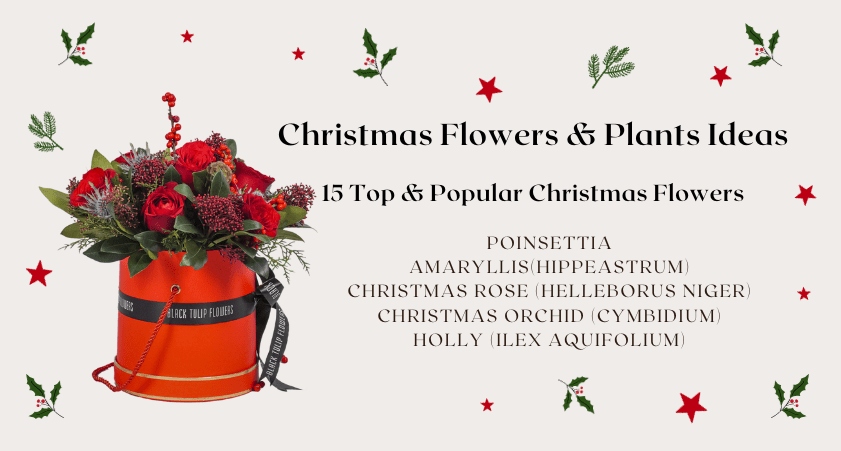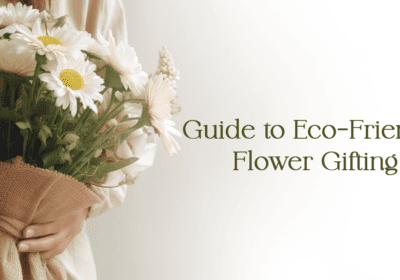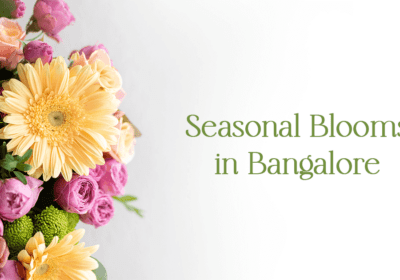
15 Top & Popular Christmas Flowers and Christmas Plants for the Holidays
15 Top & Popular Christmas Flowers and Christmas Plants for the Holidays
The holiday season is a time of joy, celebration, and festive decorations. Flowers and plants significantly add warmth and beauty to our homes during this special time. Here are 15 popular Christmas Flowers and Christmas plants that can bring a touch of holiday magic to any space:
-
The holiday season, a cherished time marked by joy, celebration, and the artistry of festive decorations, unfolds like a blank canvas awaiting the vivid strokes of Christmas flowers and plants. This period is not merely a passage of time but a splendid opportunity to infuse homes and spaces with the vibrant hues and enchanting fragrances of nature’s own celebratory offerings. It is a season where traditions intertwine with the wonders of botanical beauty, where every petal and leaf becomes a brushstroke on the canvas of holiday magic.
As we embark on this exploration, envision the holiday season as a grand tapestry, with Christmas flowers and plants serving as the intricate threads that weave together a story of warmth, tradition, and jubilation. Each botanical wonder carries within it the power to metamorphose mundane spaces into magical havens, resonating with the very essence of the season.
Poinsettia (Euphorbia pulcherrima):
The journey through this enchanting world commences with the Poinsettia, an iconic emblem of Christmas. With its vibrant red and green leaves, this plant stands as a testament to the season’s spirit. The Poinsettia, available in various colors, including serene whites and delicate pinks, embodies the diversity of festive celebrations. Its presence in homes is a herald of the joyous season, an undeniable signal that Christmas has arrived.Christmas Cactus (Schlumbergera):
The Christmas Cactus follows, a unique botanical gem known for its cascading stems and vibrant blooms. In hues of red, pink, white, and purple, it offers a splendid panorama of colors, making it a favored choice for indoor holiday decor. Its distinctive charm lies in its ability to gracefully adorn spaces, bringing a touch of elegance to the festivities.Amaryllis (Hippeastrum):
The majestic Amaryllis takes center stage with its tall stems and trumpet-shaped flowers in shades of red, white, and pink. This regal bloom graces homes as a striking centerpiece during the Christmas season, embodying the grandeur of the festivities. Its majestic presence captures the essence of celebration, standing tall amidst the holiday decorations.Christmas Flowers Rose (Helleborus niger):
-
Contrary to its name, the Christmas Rose is not a rose but a perennial, gracing winter with its delicate white flowers. This enchanting bloom adds an element of refined elegance to holiday arrangements. Despite the winter chill, the Christmas Rose emerges as a symbol of grace and beauty, blooming against the backdrop of the festive season.
Cyclamen (Cyclamen persicum):
Enter the Cyclamen, a plant characterized by distinctive petals and heart-shaped leaves. In shades of red, pink, and white, Cyclamen adds a burst of color to holiday displays. Its unique form and vibrant hues contribute to a visually stunning and dynamic Christmas decor, making it a versatile choice for festive arrangements.Paperwhite Narcissus (Narcissus papyraceus):
A fragrant addition to the holiday ensemble, the Paperwhite Narcissus unfurls its delicate white blooms during the winter months. Forced to bloom indoors, its sweet scent and ethereal appearance make it a popular choice for Christmas arrangements. The Paperwhite Narcissus carries with it the promise of freshness and renewal, infusing spaces with a sense of joy and purity.Mistletoe (Viscum album):
While not a conventional flower or plant, Mistletoe is an indispensable part of holiday traditions. Hanging a sprig of mistletoe is a charming custom that invites festive kisses, adding an element of playfulness to the season. Mistletoe, with its green leaves and symbolic significance, becomes a bridge between tradition and the joyous spontaneity of the holidays.Christmas Orchid (Cymbidium):
Orchids, renowned for their exotic beauty, take on a festive persona with the Christmas Orchid. Characterized by elegant blossoms, this botanical wonder adds a touch of sophistication to holiday decor. The Christmas Orchid, with its graceful allure, stands as a symbol of refined beauty, elevating the ambiance of Christmas celebrations.Holly (Ilex aquifolium):**
No discussion of Christmas flora is complete without the classic Holly. With its glossy green leaves and bright red berries, Holly is a timeless symbol of Christmas. Adorning wreaths, garlands, and other festive arrangements, Holly brings an element of tradition and vibrancy to the holiday decor. Its enduring popularity is a testament to its role as an emblem of the season.Christmas Flowers Ferm
-
For those seeking a subtle touch of greenery, the Christmas Fern emerges as a perfect choice. An evergreen fern, its feathery fronds contribute to the holiday displays with understated beauty. Amidst the more flamboyant blooms, the Christmas Fern adds a layer of natural elegance, harmonizing with the overall aesthetic of Christmas arrangements.
Christmas Lily (Lilium longiflorum):
Also known as the Easter Lily, this fragrant white flower makes its presence felt during the Christmas season. Often forced to bloom indoors, the Christmas Lily’s trumpet-shaped blossoms symbolize purity and renewal. Its delicate fragrance and symbolic significance make it a poignant addition to Christmas arrangements.Winterberry (Ilex verticillata):
Prized for its vibrant red berries, the Winterberry emerges as a beacon of color against winter landscapes. A popular choice for holiday arrangements, its association with the season and the burst of red make it a visually striking option. Winterberry, with its festive allure, brings a touch of nature’s brilliance to Christmas decorations.Christmas Begonia (Begonia x cheimantha):
With waxy, star-shaped flowers, the Christmas Begonia adds a festive touch to indoor spaces. Available in various colors, including the classic red and pristine white, it offers versatility in holiday decor. The Christmas Begonia, with its radiant blooms, contributes to the overall vibrancy of Christmas arrangements.Juniper (Juniperus):
Juniper, a genus encompassing various species of aromatic evergreen shrubs and trees, holds a cherished spot in the realm of holiday decorations. As the festive season approaches, the branches of Juniper, known for their aromatic allure, become a popular choice for adorning wreaths and garlands. This botanical contribution to festive aesthetics extends beyond mere visual appeal, as Juniper introduces a multisensory dimension to Christmas decor.
The utilization of Juniper in holiday adornments is not merely a superficial trend; it stems from a rich historical and cultural backdrop. Throughout the ages, this evergreen plant has symbolized endurance, protection, and purification in various civilizations. Its resilience against harsh winter conditions has made it a natural emblem of strength and vitality, making it a fitting choice for celebrations during the colder months. The incorporation of Juniper into wreaths and garlands during the holiday season thus carries a profound significance, connecting contemporary festivities with age-old traditions.
One of the most captivating features of Juniper lies in its ability to infuse spaces with a fresh and invigorating scent. The aromatic compounds present in Juniper’s branches release a fragrance that is both woody and crisp, reminiscent of the brisk winter air. This olfactory contribution transforms the surroundings, creating an atmosphere that resonates with the essence of the season. The fragrance of Juniper becomes a subtle yet powerful element, acting as a sensory trigger that transports individuals to a winter wonderland, even if they find themselves in a different setting.
The inclusion of Juniper in Christmas decorations goes beyond its aromatic appeal; it represents a conscious effort to bring the outdoors inside. In an era where urbanization and modern living often disconnect individuals from nature, the incorporation of natural elements in festive decor becomes a symbolic bridge to the great outdoors. Juniper, with its verdant branches and natural scent, serves as a reminder of the beauty of the wilderness, fostering a connection between the artificial, indoor environment and the untamed natural world.
As one weaves Juniper into wreaths and garlands, each arrangement becomes a unique tapestry of tradition and innovation. The deep green hues of the Juniper branches complement other traditional festive colors, contributing to a visually pleasing display. Moreover, the versatility of Juniper allows for creative combinations with various elements like pine cones, berries, and ribbons, enabling decorators to craft personalized and meaningful arrangements. This flexibility in design ensures that Juniper remains a timeless choice, adapting to evolving aesthetic preferences while retaining its inherent festive charm.
Beyond its aesthetic and aromatic contributions, Juniper holds historical and symbolic significance in diverse cultures. In ancient Roman times, Juniper branches were burned to purify the air during religious ceremonies, a tradition that echoes in the contemporary use of Juniper in Christmas decor. In Scandinavian folklore, Juniper was believed to ward off evil spirits and protect homes, making it a natural choice for festive decorations meant to bring joy and safeguard against negativity. Understanding the cultural resonance of Juniper adds a layer of depth to its inclusion in holiday decor, making it more than just a decorative element but a carrier of cultural heritage.
Furthermore, the sustainable and eco-friendly nature of Juniper aligns with the growing global consciousness towards responsible consumption. As individuals become more mindful of their environmental impact, the preference for natural, biodegradable decor elements has surged. Juniper, a renewable resource, fits seamlessly into this eco-conscious narrative. Its branches can be harvested without causing harm to the plant, ensuring a sustainable supply for decorative purposes. The integration of Juniper in Christmas decor, therefore, reflects a contemporary sensibility that values both aesthetics and environmental responsibility.
In conclusion, Juniper emerges as a botanical protagonist in the narrative of holiday decorations, weaving together aesthetics, tradition, and sensory experience. Its aromatic branches, laden with cultural and historical significance, transcend the superficial realm of ornamentation to evoke a deeper connection with nature and tradition. As wreaths and garlands adorned with Juniper grace homes and public spaces during the holiday season, they not only embellish the surroundings but also narrate a story of resilience, heritage, and a harmonious coexistence with the natural world. In a world that constantly evolves, Juniper stands as a timeless emblem of festive spirit, bridging the past and the present with its enduring charm.
Norfolk Island Pine (Araucaria heterophylla):
Although not a traditional Christmas tree, the Norfolk Island Pine has gained popularity as a festive houseplant. With its tiered branches resembling a miniature evergreen tree, it offers a unique and charming alternative for those seeking a touch of tradition in a compact form. The Norfolk Island Pine, with its delightful structure, becomes a living symbol of the holiday spirit.In this exploration, we’ve traversed through the diverse and enchanting world of 15 popular Christmas flowers and plants, each contributing its unique charm to the grand tapestry of holiday magic. From the iconic Poinsettia to the subtle elegance of the Christmas Fern, these botanical wonders collectively create an atmosphere of celebration, warmth, and tradition. As we continue this journey, we will unravel the stories, symbolism, and care tips behind each of these botanical treasures, inviting you to delve deeper into the captivating allure of Christmas flora. Let the magic unfold, and may these blooms and blossoms become the brushstrokes that paint your holiday season with beauty, joy, and the timeless charm of nature
1. Poinsettia (Euphorbia pulcherrima)
Undoubtedly the most iconic of Christmas plants, the poinsettia graces the season with its vibrant red and green leaves. Synonymous with the holidays, it offers a striking visual representation of the festive spirit, and its availability in various colors, including white and pink, adds a versatile touch to holiday décor.2. Christmas Cactus (Schlumbergera):
The Christmas Cactus, scientifically known as Schlumbergera, emerges as a botanical gem, gracing the holiday season with its distinctive beauty and captivating charm. As we delve into the realm of this enchanting plant, we uncover not just a festive adornment but a living testimony to elegance in indoor holiday decorations. Known for its cascading stems and vibrant blooms, the Christmas Cactus transcends mere ornamentation, becoming a living sculpture that breathes life into the festive atmosphere.
The allure of the Christmas Cactus lies in its unique features, making it a standout choice for those who appreciate diversity in their holiday displays. The cascading stems, laden with flattened, segmented leaves, create an elegant silhouette that adds a touch of sophistication to any indoor setting. Unlike traditional cacti, the Christmas Cactus is not characterized by spiky protrusions; instead, it presents a softer, more inviting appearance that aligns seamlessly with the spirit of the season.
One of the defining characteristics of the Christmas Cactus is its vibrant blooms, which burst forth in an array of colors, transforming the plant into a kaleidoscope of festive hues. The color palette ranges from classic reds and pinks to serene whites and rich purples, offering a spectrum of choices to suit diverse tastes and preferences. This versatility makes the Christmas Cactus a perennial favorite among those seeking a dynamic and visually appealing addition to their holiday decor.
As the holiday season unfolds, the Christmas Cactus becomes a focal point of attention, captivating onlookers with its ability to harmonize elegance and festivity. The cascading stems, adorned with an abundance of colorful blossoms, create a visual spectacle that elevates the ambiance of any room. Whether placed on a mantelpiece, adorning a festive table, or suspended in a hanging basket, the Christmas Cactus becomes a living ornament, enhancing the overall aesthetic with its natural grace.
Beyond its visual appeal, the Christmas Cactus carries a symbolic significance that resonates with the season’s spirit. Its ability to thrive and bloom during the winter months serves as a metaphor for resilience and the beauty that can emerge even in the midst of colder, darker times. This resilience is mirrored in its adaptation to indoor environments, making it a suitable and enduring choice for those who wish to cultivate a piece of the holiday magic within their homes.
Caring for the Christmas Cactus adds an interactive and nurturing dimension to the holiday experience. While it is relatively low-maintenance, providing the right conditions ensures optimal growth and abundant blooms. Adequate sunlight, well-draining soil, and a balanced watering routine are key elements in cultivating a healthy and thriving Christmas Cactus. This engagement in plant care becomes a rewarding part of the holiday ritual, fostering a connection between individuals and nature during this festive season.
The Christmas Cactus, with its vibrant blooms and cascading stems, becomes not just a decorative element but a living canvas that evolves throughout the holiday season. The anticipation of buds forming and the eventual burst of color adds an element of excitement and joy, creating a dynamic and ever-changing focal point in the indoor landscape. This living ornamentation transforms the home into a haven of beauty, where the Christmas Cactus becomes a silent participant in the celebrations.
In the realm of holiday decorations, the Christmas Cactus stands out as an emblem of diversity and adaptability. Its ability to thrive in indoor conditions, coupled with the myriad colors it offers, makes it a versatile choice for various holiday themes and color schemes. Whether adorning a traditional Christmas setting with reds and greens or complementing a contemporary decor with whites and purples, the Christmas Cactus effortlessly integrates into diverse design aesthetics, proving its timeless appeal.
The Christmas Cactus extends its enchantment beyond the visual realm, infusing the air with a subtle but delightful fragrance. The delicate scent, often described as sweet and slightly citrusy, adds another sensory layer to the holiday experience. As individuals gather in shared spaces, the aroma of the Christmas Cactus becomes a gentle backdrop, enhancing the overall festive ambiance with its olfactory contribution.
Beyond its role as a standalone decorative piece, the Christmas Cactus lends itself to creative arrangements and displays. Its flexible stems allow for artistic presentations, such as draping gracefully from elevated containers or forming cascading arrangements in festive baskets. This adaptability opens avenues for personal expression, as individuals explore various ways to incorporate the Christmas Cactus into their holiday decor, infusing a touch of their unique style into the festive setting.
The popularity of the Christmas Cactus extends beyond individual households, making it a favored choice for gifting during the holiday season. As a living plant, it symbolizes growth, resilience, and the enduring nature of festive joy. Presenting a potted Christmas Cactus as a gift becomes a thoughtful gesture, offering not just a momentary delight but a lasting reminder of the holiday spirit. Its versatility and ability to thrive indoors make it an ideal gift for friends, family, or colleagues, bringing a piece of the holiday magic into their homes.
In conclusion, the Christmas Cactus transcends its role as a mere plant and becomes a living embodiment of elegance and festivity during the holiday season. With cascading stems and vibrant blooms in an array of colors, it transforms any indoor space into a visual symphony. Its adaptability, resilience, and subtle fragrance add depth to its appeal, making it a cherished choice for holiday decor. As individuals engage in the care of their Christmas Cactus, a unique connection forms, creating a shared journey of growth and beauty. Whether suspended in a hanging basket, gracing a festive table, or offered as a thoughtful gift, the Christmas Cactus takes its place as a timeless symbol of the season’s joy, reminding us that even in the midst of winter, life and beauty can flourish.
3. Amaryllis (Hippeastrum):
With its majestic, trumpet-shaped flowers in shades of red, white, and pink, the amaryllis stands tall as a striking centerpiece during the Christmas season. Its regal appearance and festive colors make it a staple in holiday arrangements.4. Christmas Rose (Helleborus niger):
Contrary to its name, the Christmas rose is not a rose but a winter-blooming perennial. Its delicate white flowers, with a hint of elegance, add a touch of sophistication to holiday arrangements, creating a harmonious blend of beauty and festivity.5. Cyclamen (Cyclamen persicum):
Characterized by distinctive petals and heart-shaped leaves, cyclamen adds a burst of color to holiday displays. The shades of red, pink, and white it comes in contribute to a vibrant and visually appealing seasonal décor.6. Paperwhite Narcissus (Narcissus papyraceus):
Forced to bloom indoors during the winter months, the fragrant white flowers of paperwhite narcissus bring a sweet scent and delicate appearance to Christmas arrangements. Their ethereal charm makes them a popular choice for infusing a touch of Christmas magic.7. Mistletoe (Viscum album):
While not a traditional flower or plant, mistletoe is an integral part of holiday traditions. Hanging a sprig of mistletoe is a charming custom that invites festive kisses, adding an element of joy and playfulness to the season.Orchids, known for their exotic beauty, take on a festive persona with Christmas orchids. Their elegant blossoms add a touch of sophistication to holiday décor, offering a unique and luxurious element to Christmas arrangements.
9. Holly (Ilex aquifolium):
A classic symbol of Christmas, holly with its glossy green leaves and bright red berries is a timeless addition to wreaths, garlands, and other festive arrangements. Its traditional significance and vibrant colors make it an enduring favorite.10. Christmas Fern (Polystichum acrostichoides):
For those seeking subtle greenery in their holiday displays, the evergreen Christmas fern is a perfect choice. Its feathery fronds add a touch of natural beauty to Christmas arrangements without overpowering the overall aesthetic.11. Christmas Lily (Lilium longiflorum):
Also known as the Easter lily, this fragrant white flower is often forced to bloom indoors during the Christmas season. Its trumpet-shaped blooms symbolize purity and renewal, adding a touch of spiritual significance to holiday arrangements.12. Winterberry (Ilex verticillata):
Prized for its bright red berries, winterberry is a popular choice for holiday arrangements, providing a burst of color against winter landscapes. Its association with the season and vibrant hues make it a festive and visually striking option.13. Christmas Begonia (Begonia x cheimantha):
With waxy, star-shaped flowers, the Christmas begonia adds a festive touch to indoor spaces. Available in various colors, including red and white, it offers versatility in holiday décor, allowing for creative and personalized arrangements.14. Juniper (Juniperus):
The aromatic branches of juniper find their place in wreaths and garlands during the holiday season. Adding a fresh and woodsy scent to the surroundings, juniper contributes to the sensory experience of Christmas decorations.15. Norfolk Island Pine (Araucaria heterophylla):
Though not a traditional Christmas tree, the Norfolk Island Pine has gained popularity as a festive houseplant. Its tiered branches, resembling a miniature evergreen tree, offer a unique and charming alternative for those seeking a touch of the traditional in a compact form.These 15 Christmas flowers and plants, each with its distinct characteristics, create a diverse array of colors, shapes, and scents. Whether used in arrangements, wreaths, or as standalone decorations, these botanical treasures contribute to the magic of Christmas, making homes warm, inviting, and filled with the festive spirit. In the pages that follow, we will take a deeper dive into the characteristics, symbolism, and care tips for each of these enchanting additions to the holiday season. Let the exploration begin, and may the magic of Christmas flowers and plants unfold in all its spend
Celebrate Christmas with Black Tulip Flowers: India & Dubai
Black Tulip Flowers brings the magic of Christmas to life with stunning floral arrangements for both India and Dubai. Whether you’re decorating your home, sending a thoughtful gift, or adding a touch of festive cheer to your office, we have the perfect blooms to make your Christmas unforgettable.



